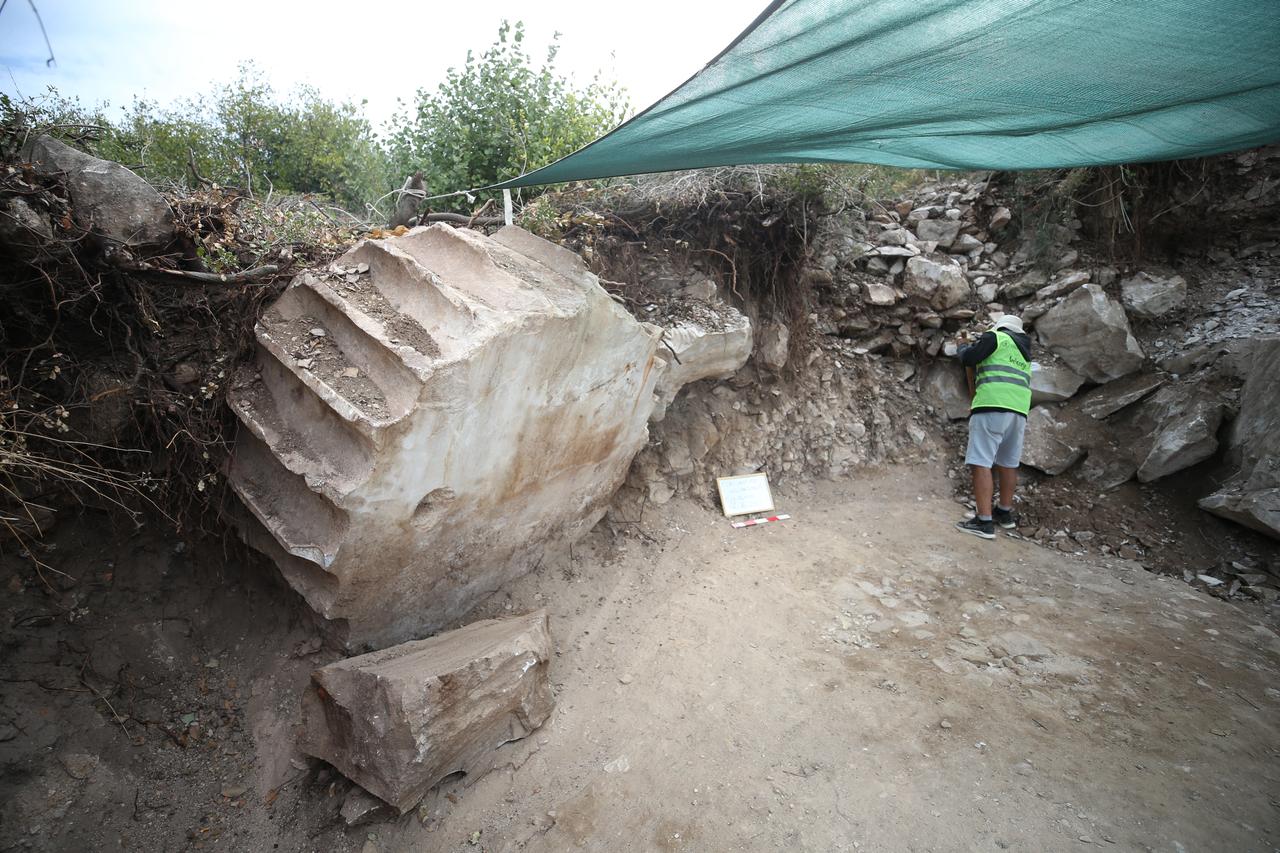
The colossal columns of the Hadrian Temple in the ancient city of Cyzicus (Kyzikos), on the Kapidag Peninsula in northwestern Türkiye, are coming back into view as excavations continue and reveal new clues about Roman art and religious life.
Archaeologists expect that the gigantic column drums and ornate capitals, once restored, will help draw more visitors to the ancient site and strengthen cultural tourism in the region.

Excavations at the ancient city of Cyzicus, located near Erdek in Balikesir province, where the Kapidag Peninsula joins the mainland, are being carried out throughout the year under the Ministry of Culture and Tourism’s “Heritage for the Future Project".
Work in the area, whose history goes back to the mid-eighth century B.C., is led by Ahmet Tercanlioglu of the Art History Department at Bandirma Onyedi Eylul University.
Thanks to its strategic position, Cyzicus served for centuries as a major settlement and commercial hub. The city is described as one of the rare ancient centers that had three separate harbors, and this network of ports helped it build up strong regional connections. Today, archaeological teams are focusing on three main areas: the Hadrian Temple, an amphitheater, and a necropolis, the formal cemetery zone of the city.
The Hadrian Temple, thought to be the largest temple in Anatolia, built in the Corinthian order, dominates the site. The Corinthian order is one of the three main styles of classical architecture, in which columns stand on a base and carry richly decorated capitals.
Measuring about 116 meters (380.5 feet) in length and 64 meters (209.9 feet) in width, the temple is also described as the second-largest Corinthian-order temple in the Roman world. Its columns and the decorative frieze band, a continuous sculpted strip running along the upper part of the structure, stand out with their elaborate carving.

Tercanlioglu notes that Cyzicus brings together architectural remains from the Greek, Hellenistic, and Roman periods, and that the Hadrian Temple has become central to long-running research at the site.
Excavations at the temple first started in the late 1980s and have carried on into the present. Scholars date the building to the second century A.D. and classify it as one of the Roman religious structures of that period, which stands out through its monumental scale.
In his assessment, the temple contributes to the artistic and religious world of the Roman Empire through both its sculptural decoration and its architectural details. What draws particular attention in the current work is the frieze band.
While many second-century and later Roman temples carry frieze motifs of a more conventional type, the frieze band at Cyzicus presents a richer sequence of reliefs.
According to the excavation team, the reliefs include scenes of an East-West conflict, episodes dedicated to Dionysos, the god associated with wine and ecstatic rituals, and compositions linked to Gigantomachia, the mythological battle between the gods and the giants.
These sculpted scenes are treated as key evidence for understanding how religious stories and symbolic conflicts were translated into stone on the temple’s exterior.

Tercanlioglu explains that roughly 60% of the Hadrian Temple excavations have been completed so far. The building has a vaulted substructure, and archaeologists frequently come across architectural remains, sculptural pieces, and other elements that help set out the temple’s overall design.
While the foundations and lower parts of the structure appear to be well preserved, much of the upper architecture, including the columns and other major blocks, has sunk beneath the ground over time and is now being brought back to the surface.
The team reports that the ongoing work often reveals elements that belonged to the load-bearing system, especially the huge column drums and capitals. During this season, excavations uncovered additional fragments of the columns and a distinctive Corinthian capital.
Tercanlioglu describes this piece as one of the most significant finds of the year and states that, in his words, “This capital appears as the largest capital in the Corinthian order found so far.”
The stylistic details on the columns and capitals point to the art of the Antonine period in the second century A.D. As excavations move forward, both the archaeological work and planned restoration efforts at the Hadrian Temple are expected to reveal more about the structure’s role in Roman religious life and, at the same time, to support the development of cultural tourism around the ancient city of Cyzicus.